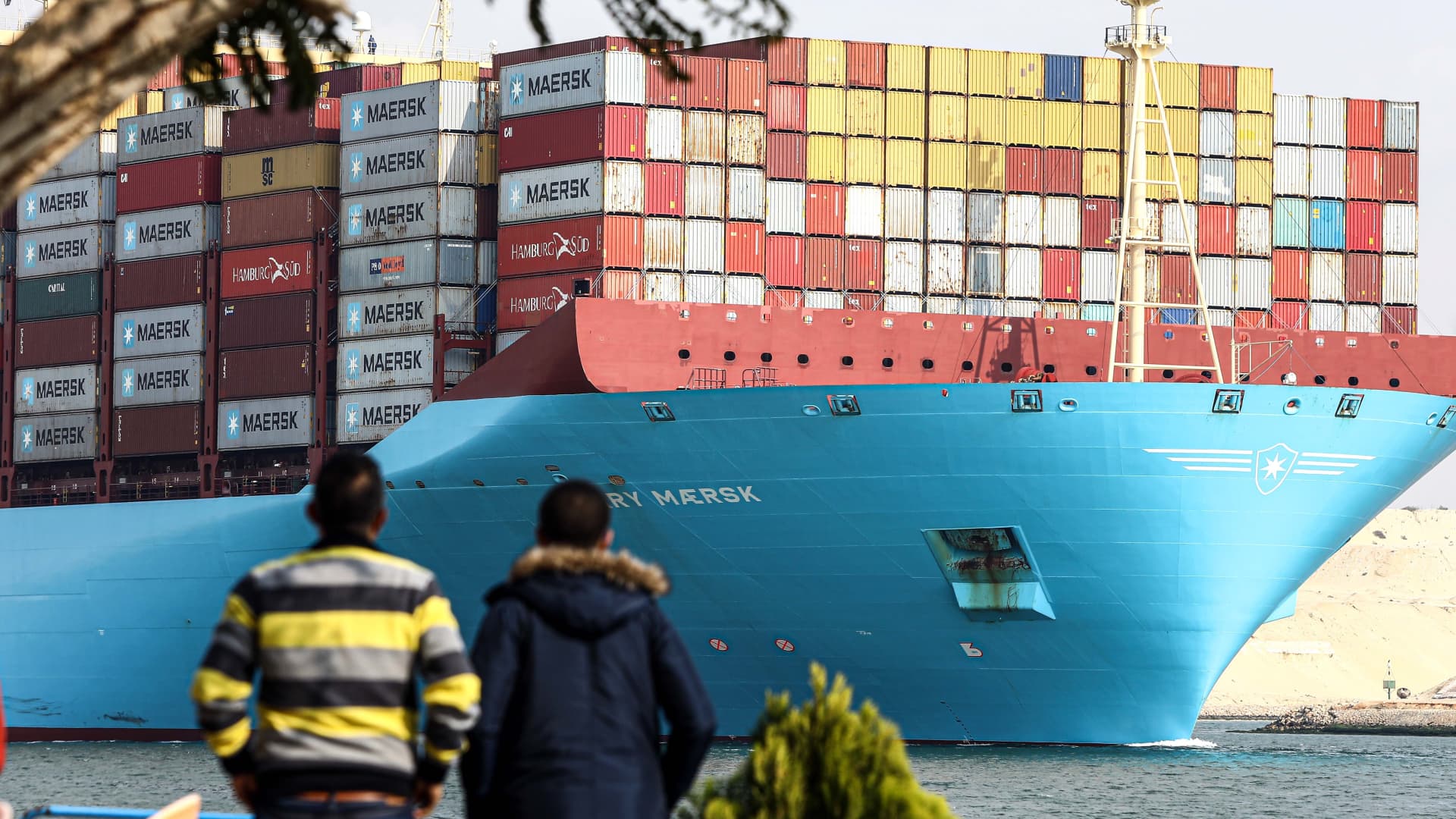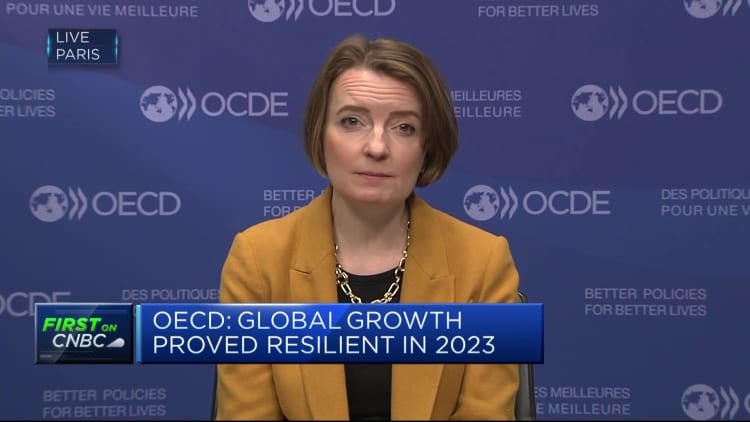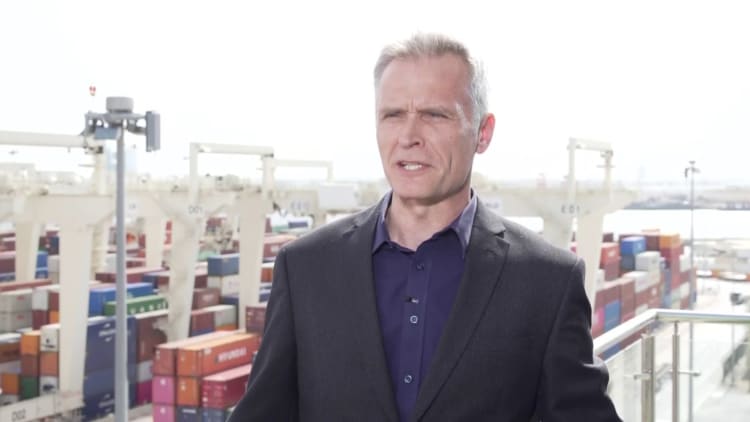

The Organization for Economic Co-operation and Development said on Monday that rising transport costs due to ongoing tensions in the Red Sea could hamper global efforts to combat inflation.
The Paris-based organization estimates that a recent 100% increase in sea freight rates could increase import price inflation by nearly 5 percentage points across the 38 member countries if it persists.
The OECD said in its latest economic outlook that this could add 0.4 percentage points to overall price growth a year from now.
In late 2023, major shipping companies began diverting ships from Egypt’s Suez Canal, the fastest trade route between Europe and Asia, amid a series of attacks by Iran-backed Houthi rebels in Yemen. Tensions remain high, with navies including those of the United States involved in the conflict.
On January 13, 2024, a cargo ship traveled on the Suez Canal in Ismailia Governorate, Egypt.
Ahmed Goma | Xinhua News Agency | Getty Images
Ships are taking the longer Cape of Good Hope route around Africa’s southern coast, which increases sailing times by 30 to 50 percent, taking up capacity in the global market.
However, the OECD also noted that the shipping industry experienced overcapacity last year as new container ships were ordered, which should ease cost pressures.
Clare Lombardelli, chief economist at the OECD, told CNBC on Monday that continued rising inflation from the recent crisis is a risk but not the organization’s base case.
“It’s something we’re watching closely… We’ve seen increases in shipping prices and if that continues for a long period of time then that will lead to consumer price inflation. But at the moment, we don’t think That’s expected to be the case,” Lombardelli said.
Tiemen Meester, chief operating officer of Dubai-based logistics company DP World, said European imports faced the biggest challenge, with serious delays in cargo already en route.
“Unfortunately, the cost of network inefficiencies is higher, so ultimately rates will go up. But realistically, it’s nowhere near the peak it was during COVID-19… How those costs will impact consumers, we’ll have to wait and see, Mester told CNBC, describing it as a “short-term issue.”
“I think we are in a stable situation now because the network has adjusted, goods are moving, bookings are increasing, it just takes more time,” he added.

Overall, the OECD’s Lombardelli said positive data from its member countries in recent months showed inflation continued to fall. She said this would help rebuild real incomes and support consumption.
The OECD’s 38 member countries include the United States, the United Kingdom, Australia, Canada, Mexico, France, Germany, Israel, Turkey, Japan and South Korea.
Its latest outlook raised its forecast for U.S. economic growth this year by 0.6 percentage points to 2.1% from the previous November forecast. Its euro zone outlook was cut by 0.3 percentage points to 0.6%, while the UK outlook was unchanged at 0.7%.
“We’re seeing positive news in the U.S., we’re seeing inflation coming down, but we’re not seeing huge costs to the labor market there,” Lombardelli told CNBC.
“Economic growth is looking stronger and inflation is coming down. So you’re going to see a rebuilding of U.S. real incomes, which will support consumption growth.”
Europe has been hit harder by energy price shocks, the impact of inflation on real income and consumption and a greater reliance on bank financing amid tighter monetary policy, she said.
Over the medium term, the OECD expects the aging workforce to be a greater drag on economic growth.
Lombardelli said that despite this, the OECD believes that if current trends continue, the European Central Bank has the ability to cut interest rates in the second half of this year.



